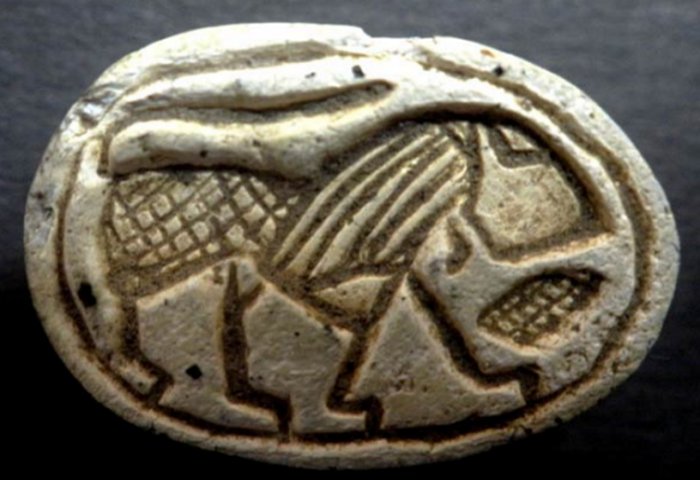Conny Waters – AncientPages.com – In 2007, a pᴀsserby discovered a scarab seal at Tel Gerisa, located in northern Tel Aviv, bearing the image of a walking lion.

Image credit: Israel Antiquities Authority
“Since time immemorial, lions have been a symbol of strength, power and authority,” says Dr. Amir Golani, an expert in ancient jewelry at the Israel Antiquities Authority.
“Without a doubt, the lion is considered the king of the jungle; its strength is unequivocal in the animal kingdom, and humans have perceived it as such as well.
In ancient Egyptian culture, the lion is depicted as a symbol of strength and authority.
In ancient Neo-ᴀssyrian culture, hunting scenes showing kings easily subduing lions – convey the message that the king is capable of conquering even a mighty lion.
The lion as a symbol of strength is also present in the Bible; there, we encounter the well-known story of Samson, who tore apart a lion with his bare hands, and the story of Daniel, who was thrown into the lion’s den, yet triumphed over them easily.”
Thus, in the case of our scarab seal as well – it is likely a seal that represents power and high status, perhaps that of the seal’s owner.
Based on the style of the seal, it can be dated to the Middle Bronze Age IIB (beginning of the 2nd millennium BCE)’; the lion motif is common and frequently appears on seal impressions from the Middle Bronze Age.
If the seal impression were yours – what animal would appear on it?
Written by Conny Waters – AncientPages.com Staff Writer





